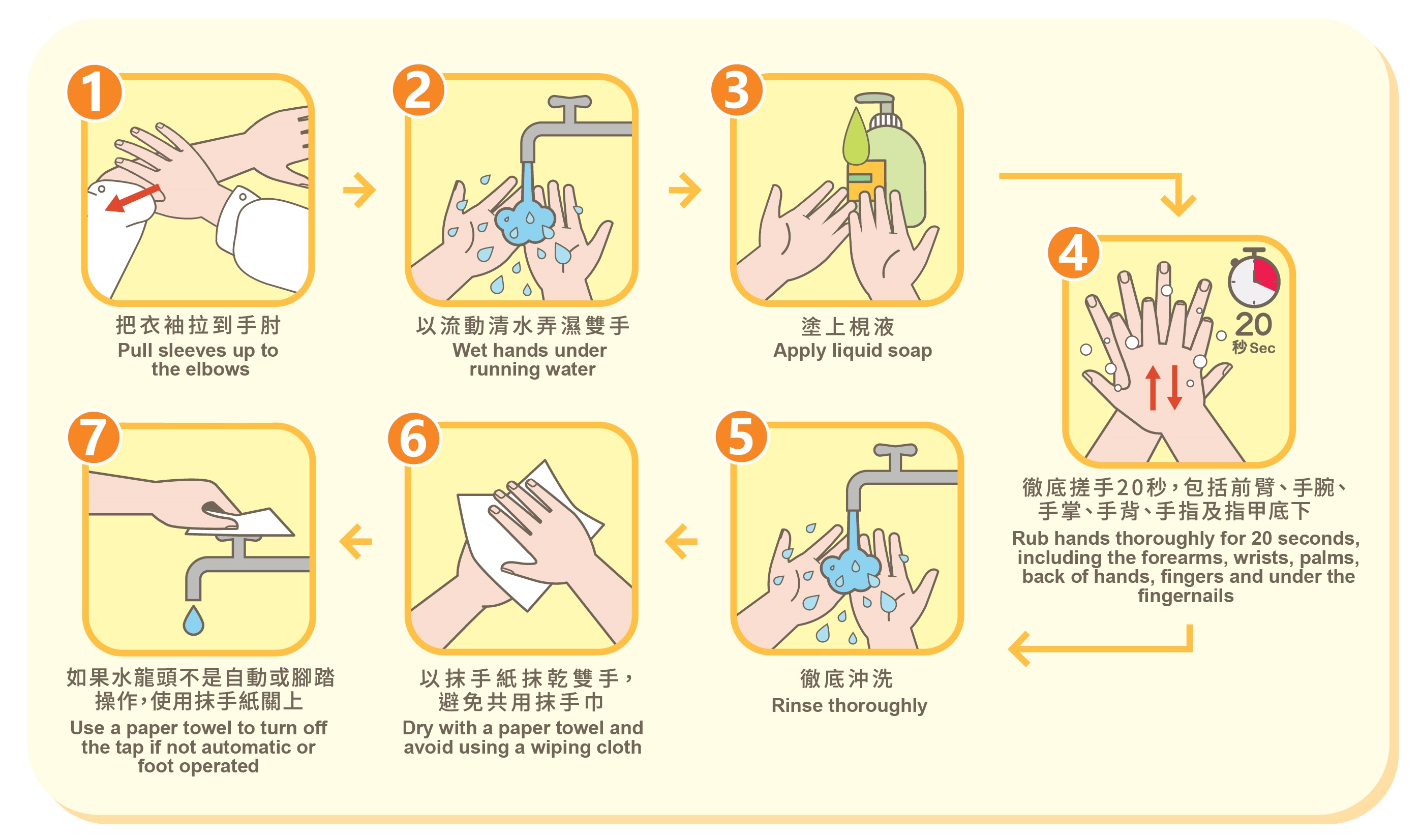
Food Safety Focus (191th Issue, June 2022) – Article 2
Clean Hands Well to Eat Well
Reported by Mr. Arthur YAU, Scientific Officer,
Risk Communication Section, Centre for Food Safety
Hand hygiene is essential to food safety. Food workers’ unclean hands may spread disease-causing microorganisms as well as antimicrobial-resistant ‘superbugs’ from their bodies and raw food to utensils, kitchen surfaces and ready-to-eat food. Other than unclean hands, using dirty towels for drying hands and inappropriate usage of disposable gloves have also been recognised as probable causes of large-scale food poisoning outbreaks in restaurants in the past. Proper hand hygiene helps reduce the transmission of foodborne diseases and battle antimicrobial resistance along the food chain.
When to Wash Your Hands?
Maintaining proper hand hygiene through cleaning one’s hands with liquid soap and water is the most effective way for food workers to reduce the spread of preventable infectious diseases. One should wash hands before and after handling foods or wearing disposable gloves; and in the course of food preparation when hands get contaminated, such as after touching the face, coughing, sneezing, blowing the nose, going to the toilet, smoking, done with cleaning and handling money, wastes, mobile phones, chemicals or raw food.
As mobile phones have become an indispensable part of our lives, bacteria on the phone are becoming more likely to be transferred to our hands and then onto our food. Since mobile devices may become contaminated and also cause distractions for food handlers, they should not be used during shifts. Their use should be restricted to during breaks or in the changing room.
How to Wash Your Hands Properly
Food handlers are recommended to wash their hands with liquid soap and water, rubbing hands for 20 seconds, as they work more effectively at removing grease and dirt and killing foodborne microorganisms. To facilitate proper and efficient hand washing, food establishments should provide the following items at the washing basin for their staff: liquid soap, tap with sensor or non-touch design (e.g. operated with foot or elbow), a continuous supply of clean running water (warm water can encourage hand washing in cold weathers), disposable tissues for drying hands and rubbish bin with a hands-free lid. Management of food establishments can also remind staff of proper hand washing procedures by displaying a hand-washing instruction poster.

Figure 3: How to wash hands properly for food handlers
Wearing Disposable Gloves Cannot Replace Hand Washing
While proper use of disposable gloves aids in the safe handling of food, particularly when there are wounds or cuts on hands, or when handling ready-to-eat food such as sandwiches and salads, it cannot substitute proper hand washing.
To properly use disposable gloves in food preparation settings, one should wash hands thoroughly before wearing, after removing and between changing gloves. Used disposable gloves should be discarded and not be reused. Gloves should be changed at the appropriate times, including between handling raw and cooked foods, when gloves are thoroughly wet with hand sweat, when gloves are torn or soiled, after completing each task such as handling garbage and when switching jobs or shifts. Similarly, using tools like food tongs can also minimise any bare-hand contact with foods.
In support of the theme of the World Food Safety Day on 7 June, "Safer food, better health”, the Centre for Food Safety (CFS) is taking this chance to promote the importance of hand hygiene in enhancing to food safety as the theme of the CFS' Food Safety Day 2022. Keeping food handlers' hands clean is an important component to safe food and satisfied customers. Let's clean hands well to eat well, and practise good hand hygiene together!


